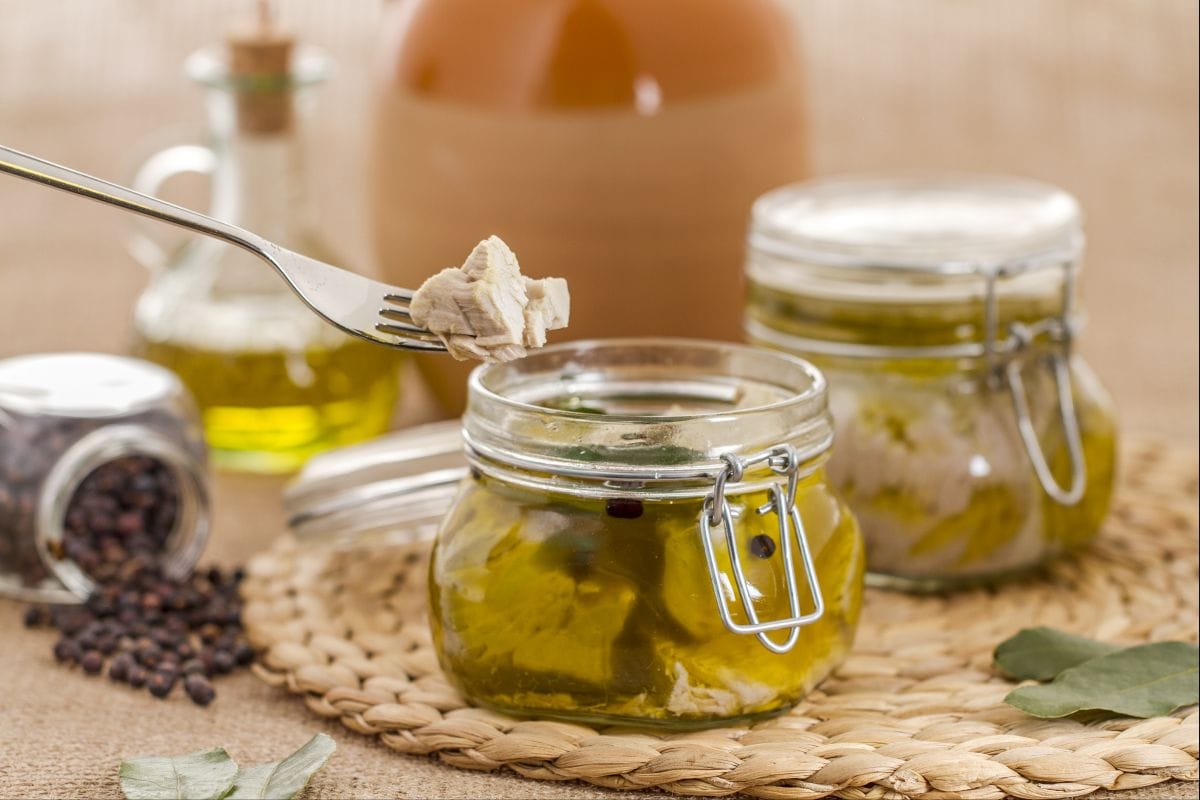Tuna salad
- Very easy
- 20 min

Tonno sott’olio is, you know, a must-have in Italian kitchens, cherished for being both simple and full of flavor. Making homemade canned tuna involves cooking fresh tuna in salted water before preserving it in jars with high-quality extra virgin olive oil, peppercorns, and maybe a few juniper berries. And the aroma? Inviting and rich—seriously good—when you finally open a jar.
Unlike store-bought stuff, this Italian preserved tuna is a real revelation. It's so moist, savory, and beautifully infused with oil. It's important, to be honest, to let it sit for at least a month, letting those flavors really really develop. Though it takes patience, the wait is worth it.
In regions like Liguria, each family has its own twist on the tonno sott'olio recipe. But let's be real—premium oil, fresh fish, and time are what matter. People have discovered so many ways to enjoy this tuna, keeping it exciting. Tossing it in a salad gives you these juicy bursts that totally outshine anything from the store.
And look, adding it to cold pasta changes a quick lunch into something special and authentically Italian. Making homemade canned tuna is about turning fish into something tasty to eat, not just for emergencies. The tradition of olive oil tuna preservation is widespread in Italy, letting families make the most of fresh ingredients, keeping it simple, and having something tasty ready whenever needed.
Trying a genuine tonno sott'olio recipe at home? Connects you to this comforting tradition. Just quality ingredients and a bit of patience, and you have a jar that elevates any sandwich, salad, or pasta to something unique. It's a reminder that the best things come from the simplest methods. A taste of Italy in every bite, for sure.
You might also like:

To prepare tuna in oil, start by placing the raw tuna steak in a bowl containing cold water, rinse it repeatedly so it loses all the blood to prevent it from coagulating during cooking and forming unsightly dark lumps 1. Repeat the operation, changing the water until it is clear and the tuna is completely blood-free 2. Separately, bring a large pot of water and salt to a boil 3,

and when it reaches a boil, add a few bay leaves to taste. 4 The salt and bay leaves will flavor the tuna, which would otherwise remain bland. At this point, add the tuna 5 and let it cook over medium heat for about 1 hour 6.

After the necessary time, drain it and let it drip in a colander inside a bowl for 24 hours, so that it loses all excess water 7. When the tuna is completely dry, proceed to sterilize the jars where you will store the tuna in oil, as indicated in the Ministry of Health guidelines found at the end of the recipe. Place the jars in a pot full of water to boil for about 30 minutes 8, then let them dry completely, upside down on a clean cloth 9.

Coarsely break the tuna into pieces 10 and place it in the jars, pressing well with your hands 11. Cover it with extra virgin olive oil, taking care to cover the tuna completely but leaving 0.4 inches from the jar's rim 12 and,

with the help of a knife, shred the tuna to ensure it is completely soaked in oil 13. On the surface of each jar, place 3 juniper berries and a bay leaf 14, then seal tightly by inserting the special plastic press as seen in the photo 15; this will keep the tuna pressed down (if you do not have the presses, you can omit them).
Close the jars and proceed with the reboiling following the instructions in the Ministry of Health guidelines mentioned at the end of the recipe. If after reboiling you notice the formation of small air bubbles, when the jar is still warm, gently tap it on a surface to bring the bubbles to the top, where they will naturally disappear.
When ready to consume the tuna in oil, you can test the vacuum seal by pulling the special tab: if pulling it produces a sharp noise, it means the contents have been preserved with the correct vacuum seal. Conversely, if pulling the tab the seal feels "soft," it means the vacuum seal was not created correctly, and it is best not to eat its contents. Your tuna in oil is ready to be enjoyed!